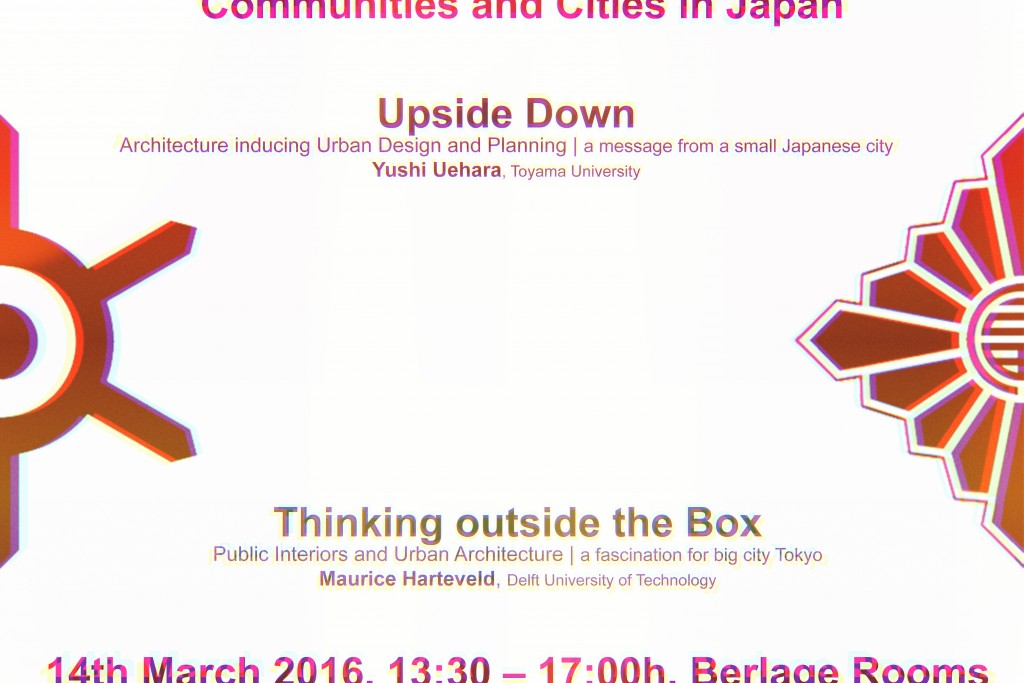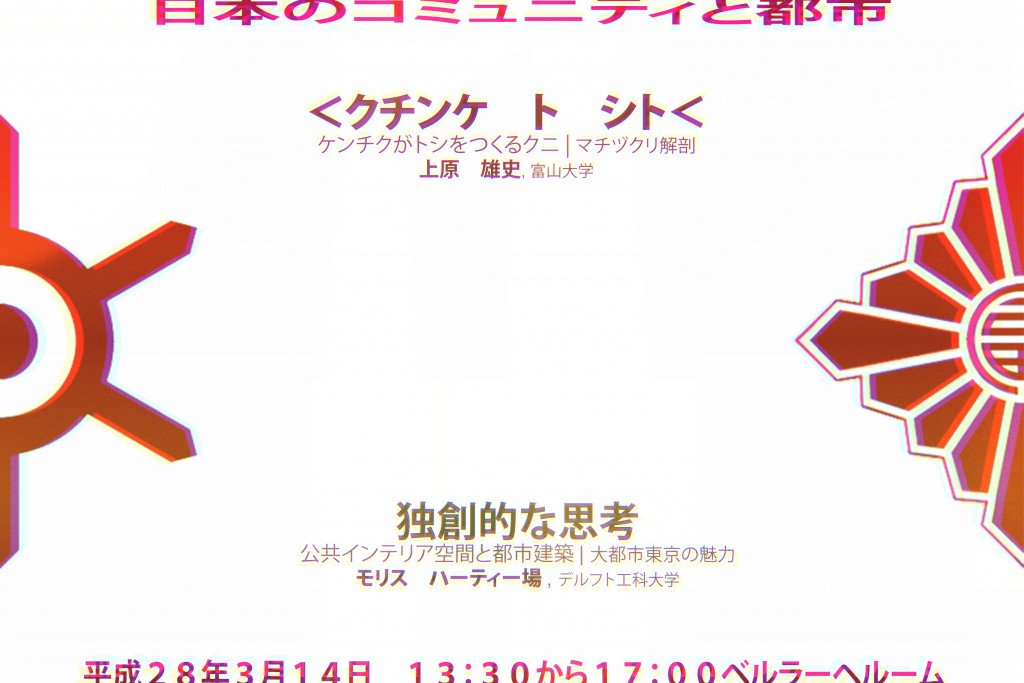Dual Lectures
Blurring Architecture, Urban Design and Planning at
14th March 2016, 13:30 – 17:00h
Delft University of Technology
Berlage Rooms
Julianalaan 132-134
Delft
In two cross-cultural lectures, views on architecture, urban design and planning merge. Yushi Uehara and Maurice Harteveld exchange observations in Japanese cities; from the inside-out and outside-in.

Upside Down
Architecture inducing Urban Design and Planning / A message from a small Japanese city.
Yushi Uehara, Toyama University
In a puzzling world of urban complexity, Japan showcases new ways to interrelate architecture, urban design and planning. These are alternative approaches, which by nature mirror the ones in Europe. Emerged from a very different ownership arrangement and understanding of city and community, the country integrates them in one spatial organisation. In this line, Yushi Uehara is committed to take an active role in building cities by means of ‘machi zukuri’. This particular approach promotes community needs and participation in a mohave mix of disciplines. Uehara presents architecture inducing urban design and planning. He challenges the structuralist order between the fields of urbanism and architecture. In that sense, questioning ‘who comes first’ is a moot, like the chicken or the egg causality dilemma. As such the lecture provides an inspiriting fresh approach from small Japanese cities.
Thinking outside the Box
Public Interiors and Urban Architecture / A fascination for big city Tokyo.
Maurice Harteveld, Delft University of Technology
Of all cases on the globe, Tokyo’s interior systems must excite curiosity and imagination of any urban designer, planner or architect highly. These systems are part of the biggest built structures in the metropolis; kilometres long. Impressive in size. They are also the busiest places in the urban fabric, more than the streets outdoors; millions of people use these enclosed spaces daily. Impressive by its crowd. In an epistemological search for understanding public space, Maurice Harteveld has found these places as a starting point to test European theorems, consistent parts of our thinking but never proven. This lecture challenges the definition on public space as the place where people gather as a whole, hence where all kinds of individuals assemble and real strangers meet. If this is true, these interiors may be the only public spaces. At the same time, in a city strongly based on communities, we may presume that public space has more faces.

日本のコミュニティと都市
<クチンケ ト シト<
ケンチクがトシをつくるクニ|マチヅクリ解剖
上原 雄史, 富山大学
独創的な思考
公共インテリア空間と都市建築|大都市東京の魅力
モリス ハーティー場 , デルフト工科大学
平成28年3月14日 13:30から17:00ベルラーヘルーム
デルフト工科大学



